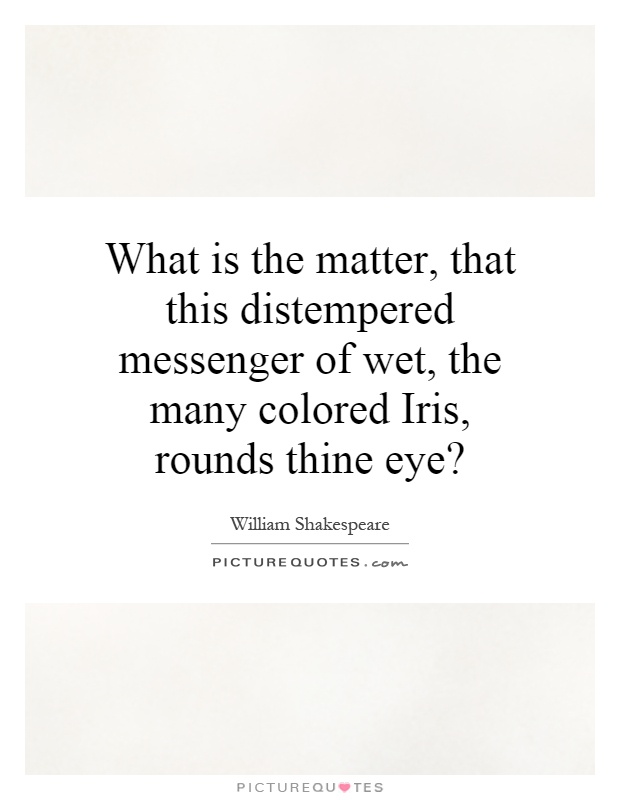What is the matter, that this distempered messenger of wet, the many colored Iris, rounds thine eye?

What is the matter, that this distempered messenger of wet, the many colored Iris, rounds thine eye?
In the works of William Shakespeare, the use of vivid imagery and poetic language is a hallmark of his writing. One such example can be found in the line, “What is the matter, that this distempered messenger of wet, the many colored Iris, rounds thine eye?” This line, spoken by the character of King Lear in the play of the same name, is a powerful and evocative description of the emotional turmoil and inner conflict experienced by the character.The use of the term “distempered messenger of wet” to describe the rainbow, or Iris, is a striking choice of words that conveys a sense of chaos and disorder. The word “distempered” suggests a lack of balance or harmony, while “messenger of wet” alludes to the tears and emotions that the rainbow symbolizes. By describing the rainbow in this way, Shakespeare is able to capture the tumultuous and unsettled state of mind that King Lear is experiencing.
The phrase “rounds thine eye” further emphasizes the intensity of the emotions that King Lear is feeling. The image of the rainbow encircling his eye suggests a sense of overwhelming emotion and inner turmoil. It is as if the rainbow is a physical manifestation of the storm raging within him, a visual representation of the chaos and confusion that he is experiencing.
Overall, this line from King Lear is a powerful example of Shakespeare’s ability to use language to convey complex emotions and inner states of being. Through the use of vivid imagery and poetic language, he is able to capture the depth and intensity of human emotion in a way that is both evocative and profound. This line serves as a reminder of the enduring power and beauty of Shakespeare’s writing, and the timeless relevance of his exploration of the human experience.












 Friendship Quotes
Friendship Quotes Love Quotes
Love Quotes Life Quotes
Life Quotes Funny Quotes
Funny Quotes Motivational Quotes
Motivational Quotes Inspirational Quotes
Inspirational Quotes